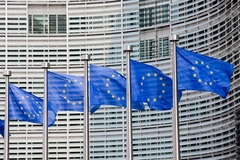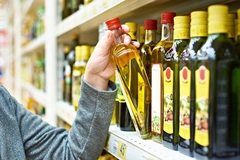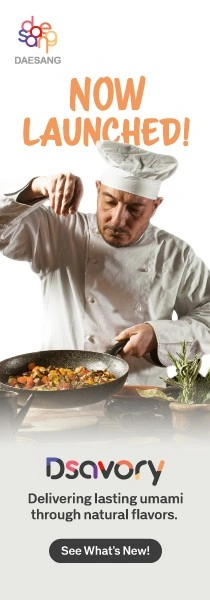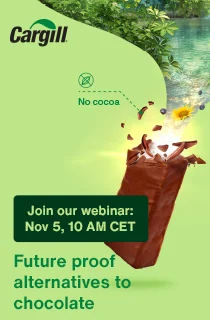Arsenio CEO discusses olive oil transparency and consumer trust as prices stabilize
Key takeaways
- Counterfeit and low-quality olive oils are more prevalent, undermining consumer trust.
- Arsenio CEO Arsen Khachaturyants stresses that producers must clearly communicate origin, harvest, and quality to stand out.
- The industry should promote quality and traceability to rebuild credibility and justify premium pricing.
Olive oil prices hit a record high over the last two years, driven by lower production, climate change challenges, and a spike in adulteration and fraud cases. But now, the European market is showing signs of stabilization.
In May, the Harmonised Index of Consumer Prices for olive oil in the EU-27 fell by 26% year-on-year, further “deepening” the downward trend that began in April 2024, suggests International Olive Council data. Producer prices for extra virgin olive oil fell sharply in early July 2025 in Jaén (Spain) and Chania (Greece), while Bari (Italy) remained comparatively stable.
However, while the price drops in some regions offer short-term relief for suppliers and consumers, a new challenge is emerging — consumer trust. Lower prices, a lack of a protected status, and uneven production across regions has led to an increase in cases of counterfeit or diluted olive oils, further undermining consumer trust in brands.
For olive oil producers like Italy-based Arsenio, the focus has shifted from scarcity to credibility. The company specializes in cold-pressed extra virgin olive oil produced from Tuscan olive groves, focusing on zero-waste production and zero-plastic in packaging.
Founder and CEO Arsen Khachaturyants speaks with Food Ingredients First about how the drop in prices can make fake or low-quality extra virgin olive oils more profitable. He also addresses what brands can do to communicate the integrity of their products, as consumer demand for transparency and traceable sourcing grows.
As olive oil prices ease, what are the biggest challenges facing producers and consumers?
Khachaturyants: The idea that olive oil production is recovering isn’t entirely accurate. For example, Greece has faced very low production this year. Crete, in particular, has seen a major drop because of drought and fruit fly damage. Italy has also had a challenging season, though not as severe. So while production in Spain might improve, other major producing countries are still struggling. The harvest has only just begun, so we’ll need to see how the new vintage develops.
As for the biggest challenge, it’s still differentiation for producers — explaining why their olive oil is unique, why it costs more, or why a cheaper one might not offer the same quality. Another ongoing problem is the presence of fake or lower-quality extra virgin olive oils on the market. When prices drop, counterfeit oils become even more profitable, and consumers may be less cautious, assuming that even low-priced oils are authentic.
For consumers, the challenge is awareness. They want to know where their olive oil comes from, who made it, where the olives were grown, and how it was produced. This information is usually available on websites or social media, but customers need to take a moment to look. As the market grows, there’s a higher chance of them buying something that isn’t high quality. That’s why it’s important to know the producer.
 When olive oil prices drop, counterfeit oils become more profitable as consumers grow less cautious, says Arsenio founder and CEO Arsen Khachaturyants.
When olive oil prices drop, counterfeit oils become more profitable as consumers grow less cautious, says Arsenio founder and CEO Arsen Khachaturyants.
What are the most common misleading cues you see on olive oil labels?
Khachaturyants: One of the most misleading things I’ve seen was how extra virgin olive oil is presented in the US. You might see “extra virgin olive oil” printed in large bold letters, but in the tiny print below it, it says “blend” or “contains extra virgin olive oil.” And while that’s technically accurate, it’s also very misleading. This kind of labeling would never pass in Europe.
Another issue is design language. A green, rustic-looking label might make consumers assume the product is organically or sustainably produced, when in fact, there’s no certification behind it. Unless you see an official organic logo clearly stated, it’s just misleading marketing.
Origin is another issue. Many bottles say “European extra virgin olive oil,” which sounds prestigious but actually means the oil can be a mix from multiple countries, like Spain, Greece, or Italy. When olives are transported long distances before pressing, quality drops.
What role do harvest timings play in olive oil’s flavor and health benefits?
Khachaturyants: It really depends on harvest dates and the producer’s style. Some prefer to harvest early to create greener olive oils, but those can sometimes be unbalanced and end up too spicy. Others harvest later, resulting in a golden color and a milder, fruitier taste, but there’s also a risk that a later harvest can result in an unbalanced flavor.
It’s similar to grapes in wine, as the producer’s style and preference matter, and the season plays a role, too. There are variations from year to year depending on weather conditions. Sometimes producers wait longer for the fruit to have more pulp, which means the olives are more mature.
Health benefits also depend on the olive variety and weather conditions. People often focus on polyphenol levels, usually higher when olives are harvested earlier, but that’s not always the case. It also depends on the variety and how the oil is processed. You can harvest early, but if it’s not processed correctly or a particular variety, it might have fewer polyphenols than another type harvested later, so again, it’s relative.
Brands should communicate this clearly through social media and other channels. They need to be scientific, but simple, with clear language and evidence — without proof, you risk misleading your customer.
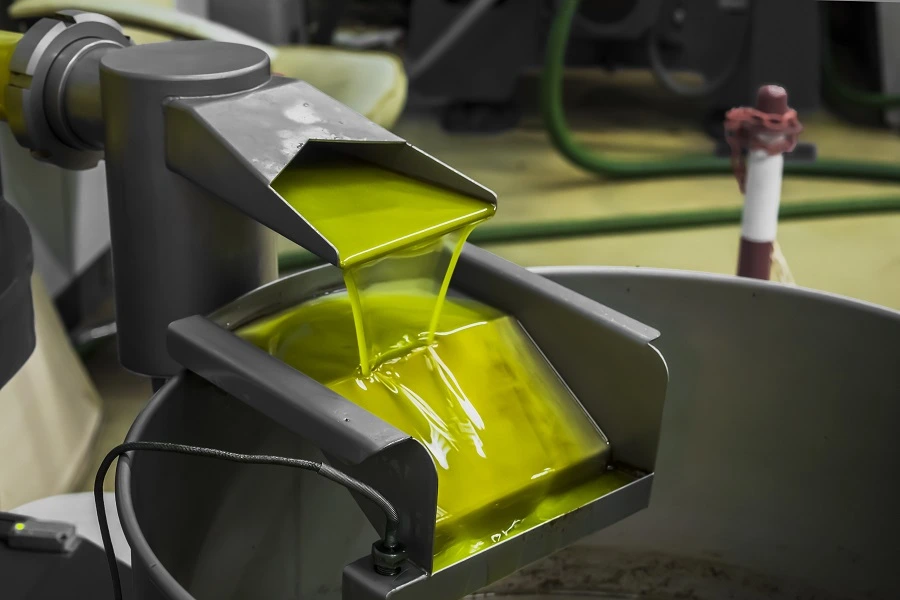 Olive oil has no single protected status like Champagne or Parmesan, allowing anyone to produce and market it.
Olive oil has no single protected status like Champagne or Parmesan, allowing anyone to produce and market it.
Are there trends in consumer behavior that show more label scrutiny or demand for transparency?
Khachaturyants: Yes, you can see the interest in transparency and labels across industries, including wine. Consumers want to know if a product is organic, where it comes from, the variety, and why it has a certain color or label design. The demand for transparency is growing, but it’s not an extreme shift. However, it is noticeable, especially in the US and UK markets, where people tend to be more open-minded and curious.
You can see this behavior trend particularly in groups influenced by nutritionists, vegetarians, and vegans who share information about higher-quality options. They talk about the benefits of cold-pressed oils, freshness, shorter expiry dates, and even the importance of knowing polyphenol levels. So yes, there is a clear trend toward greater awareness and more scrutiny of what’s on the label.
Unlike products like Champagne or Parmesan, olive oil doesn’t have a protected status. How does this open the door for marketing spin, and what implications does this have for brands?
Khachaturyants: The lack of protected status means anyone can produce olive oil. On one side, this allows for diversity with different terroirs, olive varieties, and climate conditions all influencing flavor and aroma. And that variation is part of what makes olive oil so interesting. However, this also creates challenges for traditional producers, especially in countries like Italy, Greece, and Spain. Other regions can produce olive oil more cheaply and still label it extra virgin olive oil. While this is technically fair, as olives are olives, it can blur the lines of quality and origin.
Even without formal protection, names like “Italian extra virgin olive oil” or “Greek extra virgin olive oil” still carry strong reputations, which have value. Italian oils, for instance, often command higher prices than Spanish or Greek ones, simply because of perception. It’s partly because decades of cultural influence with films, books, and magazines all reinforce those national identities. So, while the lack of protection opens the door to marketing spin, it also highlights how powerful country branding remains in shaping consumer trust.
 Trust and traceability now matter more to consumers than price alone.
Trust and traceability now matter more to consumers than price alone.
What can brands do to ensure they stay ahead of compliance as regulators tighten food labeling and transparency rules?
Khachaturyants: Brands need to play by the rules and stay up to date. Regulations are changing quickly, especially in the past few years, but keeping track of every update is essential. Brands should also use transparency to their advantage — they should design clear, accurate labels and use social media to explain them, showing consumers exactly where to find key information and what it means.
What should the olive oil industry focus on next?
Khachaturyants: The industry needs to focus on the same processes as always: quality, transparency, and education. Producers must keep highlighting that olive oil is a healthy, valuable product and that it’s better for consumers to spend a little more for higher quality and to know where the olives come from, how the oil is made, and what sets it apart.
Making people understand that good olive oil is a long-term investment is also key. You finish a bottle of wine in one meal, but a bottle of olive oil lasts for weeks, sometimes months. Therefore, paying a bit more for something that enhances every dish and supports artisanal production makes sense. But the focus shouldn’t just be on price — it also needs to help consumers recognize and appreciate true quality.

